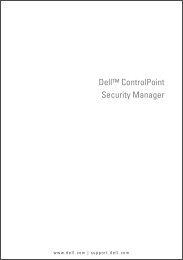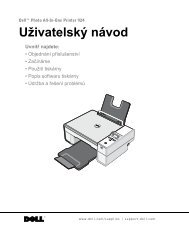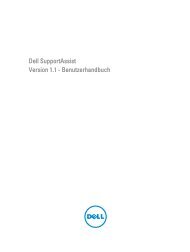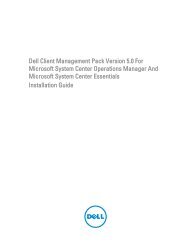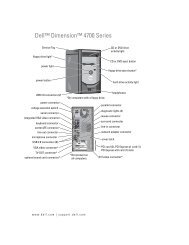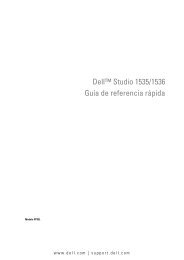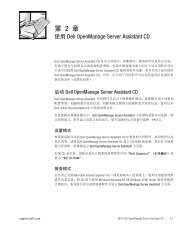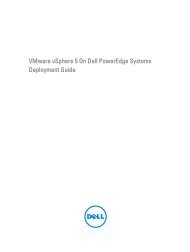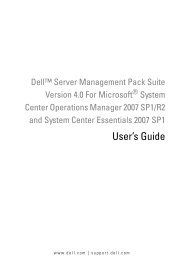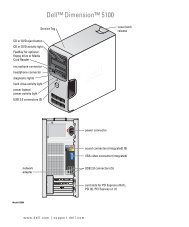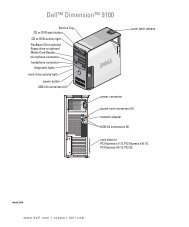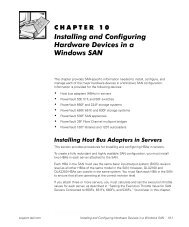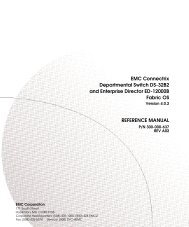Dell™ PowerEdge™ Expandable RAID Controller 5/i ... - Dell Support
Dell™ PowerEdge™ Expandable RAID Controller 5/i ... - Dell Support
Dell™ PowerEdge™ Expandable RAID Controller 5/i ... - Dell Support
Create successful ePaper yourself
Turn your PDF publications into a flip-book with our unique Google optimized e-Paper software.
<strong>RAID</strong> 1 uses disk mirroring so that data written to one physical disk is simultaneously written to another<br />
physical disk. This is good for small databases or other applications that require small capacity, but<br />
complete data redundancy.<br />
<strong>RAID</strong> 5 uses disk striping and parity data across all physical disks (distributed parity) to provide high data<br />
throughput and data redundancy, especially for small random access.<br />
<strong>RAID</strong> 10, a combination of <strong>RAID</strong> 0 and <strong>RAID</strong> 1, uses disk striping across mirrored spans. It provides high<br />
data throughput and complete data redundancy.<br />
<strong>RAID</strong> 50, a combination of <strong>RAID</strong> 0 and <strong>RAID</strong> 5, uses distributed data parity and disk striping and works<br />
best with data that requires high system availability, high request rates, high data transfers, and<br />
medium-to-large capacity.<br />
<strong>RAID</strong> Terminology<br />
Disk Striping<br />
Disk striping allows you to write data across multiple physical disks instead of just one physical disk. Disk<br />
striping involves partitioning each physical disk storage space into stripes that can vary in size ranging<br />
from 8 KB to 128 KB, often referred to as stripe size. These stripes are interleaved in a repeated<br />
sequential manner. The part of the stripe on a single physical disk is called a strip.<br />
For example, in a four-disk system using only disk striping (used in <strong>RAID</strong> level 0), segment 1 is written to<br />
disk 1, segment 2 is written to disk 2, and so on. Disk striping enhances performance because multiple<br />
physical disks are accessed simultaneously, but disk striping does not provide data redundancy.<br />
Figure 1-1 shows an example of disk striping.<br />
Figure 1-1. Example of Disk Striping (<strong>RAID</strong> 0)<br />
Stripe element 1<br />
Stripe element 5<br />
Stripe element 9<br />
Stripe element 2<br />
Stripe element 6<br />
Stripe element 10<br />
Stripe element 3<br />
Stripe element 7<br />
Stripe element 11<br />
Stripe element 4<br />
Stripe element 8<br />
Stripe element 12<br />
Disk Mirroring<br />
With mirroring (used in <strong>RAID</strong> 1), data written to one disk is simultaneously written to another disk. If<br />
one disk fails, the contents of the other disk can be used to run the system and rebuild the failed physical<br />
disk. The primary advantage of disk mirroring is that it provides 100 percent data redundancy. Because<br />
the contents of the disk are completely written to a second disk, it does not matter if one of the disks<br />
fails. Both disks contain the same data at all times. Either of the physical disks can act as the operational<br />
physical disk.<br />
Overview 13



